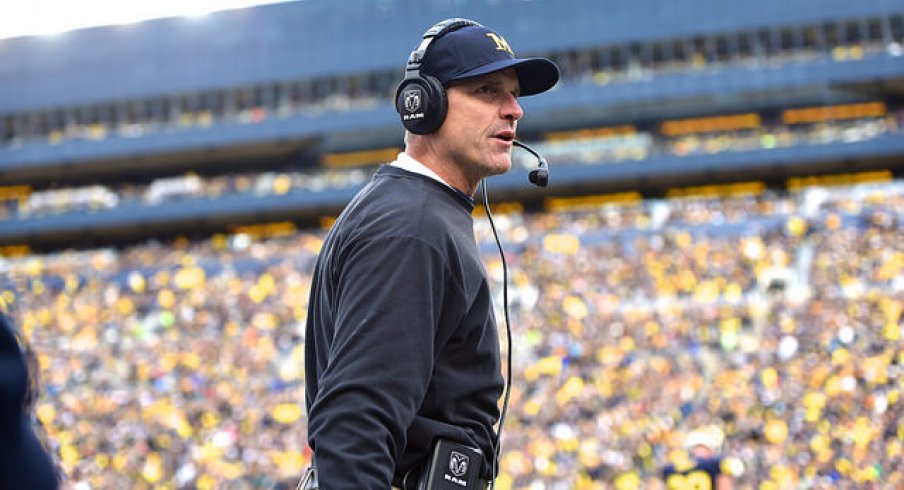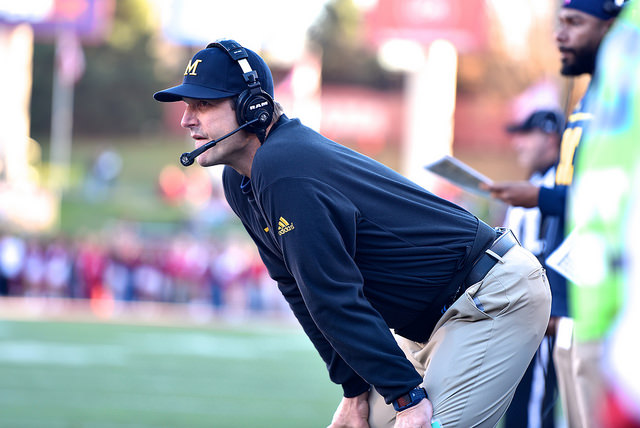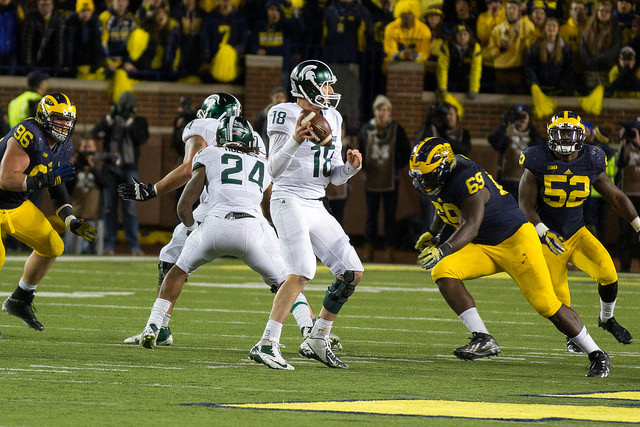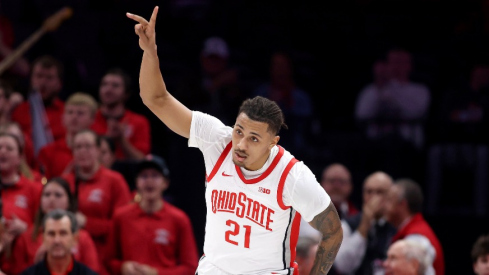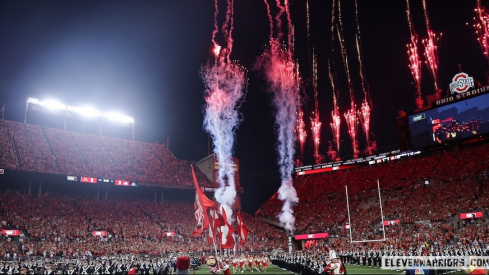Everything changed in Ann Arbor, Michigan on Dec. 30, 2014.
That was the day one of college football's most storied programs was revamped and one of the greatest rivalries in all of sports was given new life. Dec. 30, 2014 was the day Michigan hired Jim Harbaugh as its head football coach.
The Michigan program had fallen on hard times. The Brady Hoke era came to a screeching halt after it started with such promise. The Wolverines went from an 11-2 record in Hoke's first season to a dismal 5-7 mark just three years later. That, of course, followed Rich Rodriguez's tenure as Michigan's head coach — a three-year span where the program went just 15-22.
Michigan, college football's all-time winningest program, was just 46-42 in its seven seasons since Lloyd Carr's final year in 2007. It was near rock bottom for the maize and blue; and it was clear a big change was needed.
So Michigan hired Harbaugh, a former Wolverines quarterback who played for Bo Schembechler, the most iconic coach in Michigan's history. It was a hire that made headlines all summer, and was just the splash the program needed at the perfect time.
Harbaugh was one of those "rockstar" head coaches. He had won at every place he had previously been and he was expected to be the guy who would revive the Michigan program and return it to national prominence.
He is just 11 games into his tenure at Michigan and, despite the sky-high expectations, Harbaugh has more than lived up to the hype so far. Michigan fans were certain there would be instant success, but anybody who wasn't blinded by the maize and blue goggles thought it might take a year or two considering where the Michigan program was.
Harbaugh has the Wolverines at 9-2 in his first season at the helm and with one game still left to play — the annual rivalry game against Ohio State — Michigan still has an opportunity to win the Big Ten East and play in the Big Ten championship game.
It's quite remarkable to think about the fact Michigan is back at this level this fast, but few would argue it's a bad thing for both the rivalry with the Buckeyes and for the Big Ten as a whole.
Let's take a deeper look at how Michigan got here in Harbaugh's first season.
The Opener
All eyes were on Michigan on Sept. 3 as Harbaugh was set to make his debut in a road game against Utah. It was a Thursday night game on national television, exactly what this type of debut warranted.
The Utes were projected to be a good team. Michigan — coming off that 5-7 season in 2014 — wasn't. Yet everyone was curious as to how the Harbaugh-led Wolverines would actually look.
Utah won, 24-17, but it was clear from watching the game this was a different Michigan team. The Wolverines had some pieces in place for a nice season and with Harbaugh's coaching ability, a surprise season could be in order.
The Response
After the season-opening loss to the Utes, who are now 8-3 on the season, Michigan returned home for three-straight games before opening Big Ten play.
The Wolverines were dominant in all three — a 35-7 win over Oregon State, a 28-7 victory against UNLV and a 31-0 shutout win over BYU.
The win against the Cougars was the start of something rare. Michigan followed that performance up with two more consecutive shutouts — blanking Maryland 28-0 then destroying Northwestern, 38-0. The three-straight shutouts are something that hadn't been done in the Michigan program since 1980.
The Wolverines sat at 5-1 after its latest slate of games and had one of the top defenses in the country. Transfer quarterback Jake Rudock was turning into a steady manager under center and the Michigan offense was starting to round itself into form to compliment the lockdown defense.
The Heartbreaker
Michigan's biggest test since its opener awaited Oct. 17 when one of its biggest rivals, Michigan State, came to town. The seventh-ranked Spartans were looked at as a possible representative in the College Football Playoff for the Big Ten. A Michigan upset would have created all sorts of buzz.
The Wolverines led nearly the entire way and with 10 seconds remaining they lined up to punt clinging to a 23-21 lead. Kick the ball away and it was likely going to be a Michigan victory.
Punter Blake O'Neill dropped the snap, however, and still attempted to get his kick off. He was hit, the ball came free and it was scooped up by Michigan State's Jalen Watts-Jackson and returned 38 yards to the end zone as time expired for what was one of the craziest finishes in recent college football history.
Michigan State 27, Michigan 23. Harbaugh and the Wolverines were stunned.
The Close Calls
Harbaugh talked about it in the week following the stunning loss to the Spartans, that Michigan's season could go one of two ways: The Wolverines could bounce back, or they could fold after the heartbreaker, sending the season into a downward spiral.
They chose the former, and have since rattled off four-straight wins to get to 9-2. Two of those wins came down to the wire, games Michigan would not have won a year ago. On the road at Minnesota, the Wolverines needed a goal line stand to preserve a 29-26 win over the Gophers. And again, two weeks later on the road at Indiana, Michigan needed double overtime to squeak out a win against the upset-minded Hoosiers, 48-41.
The one-year turnaround from Harbaugh at Michigan has been impressive, to say the least. The Wolverines never really lacked talent under Hoke — Michigan was doing just fine on the recruiting trail — but they certainly didn't develop players the way they should have.
Harbaugh has changed all of that and instilled his culture on the program. He's set Michigan up for both present success and success in the future.
That is good for college football, good for the Big Ten and perhaps, most importantly, good for The Game.
